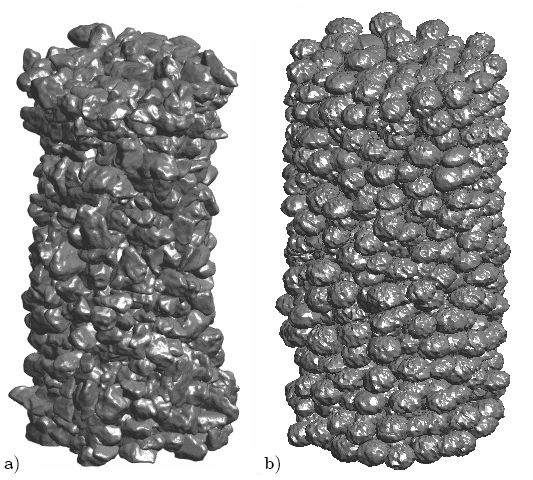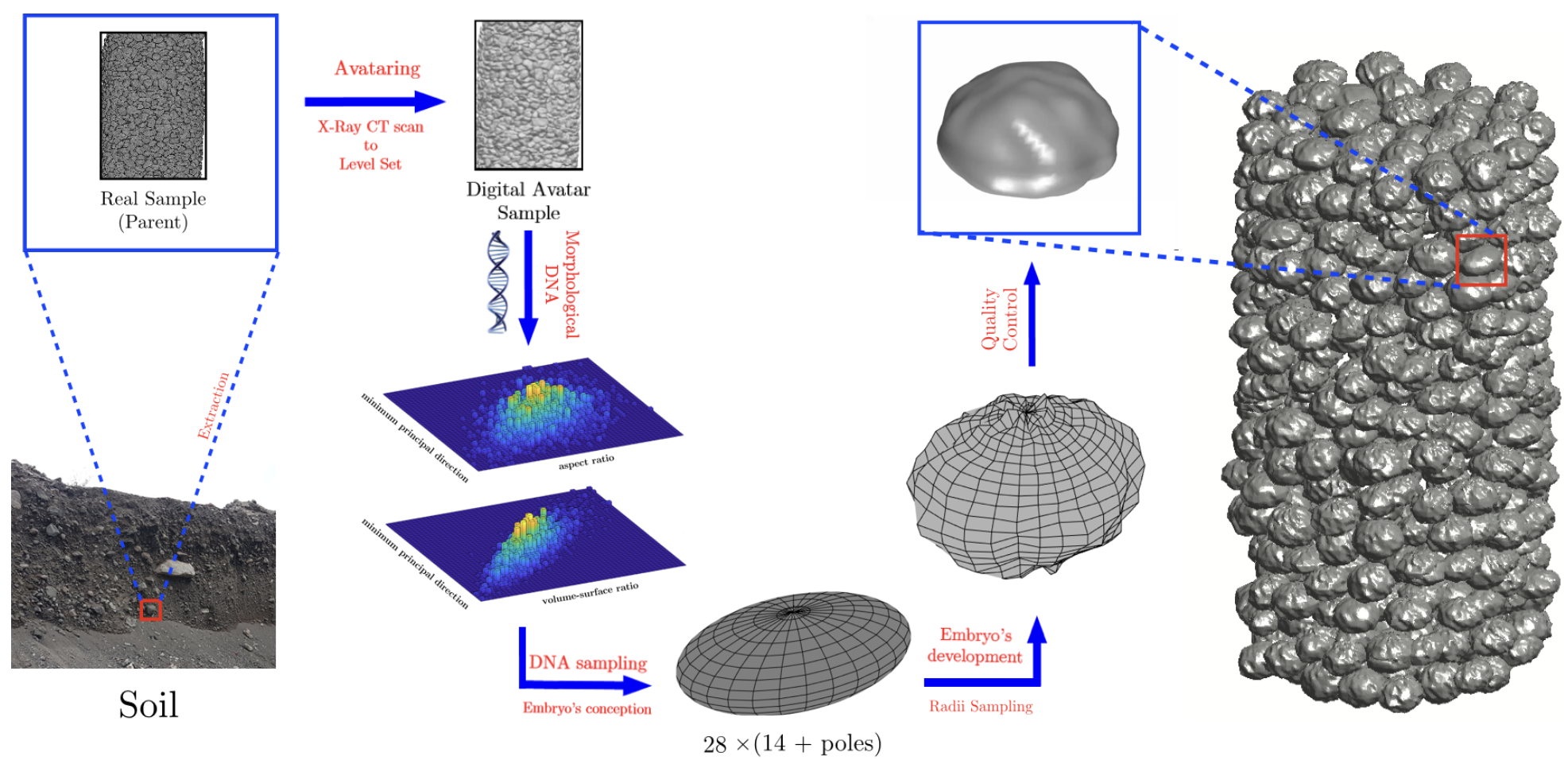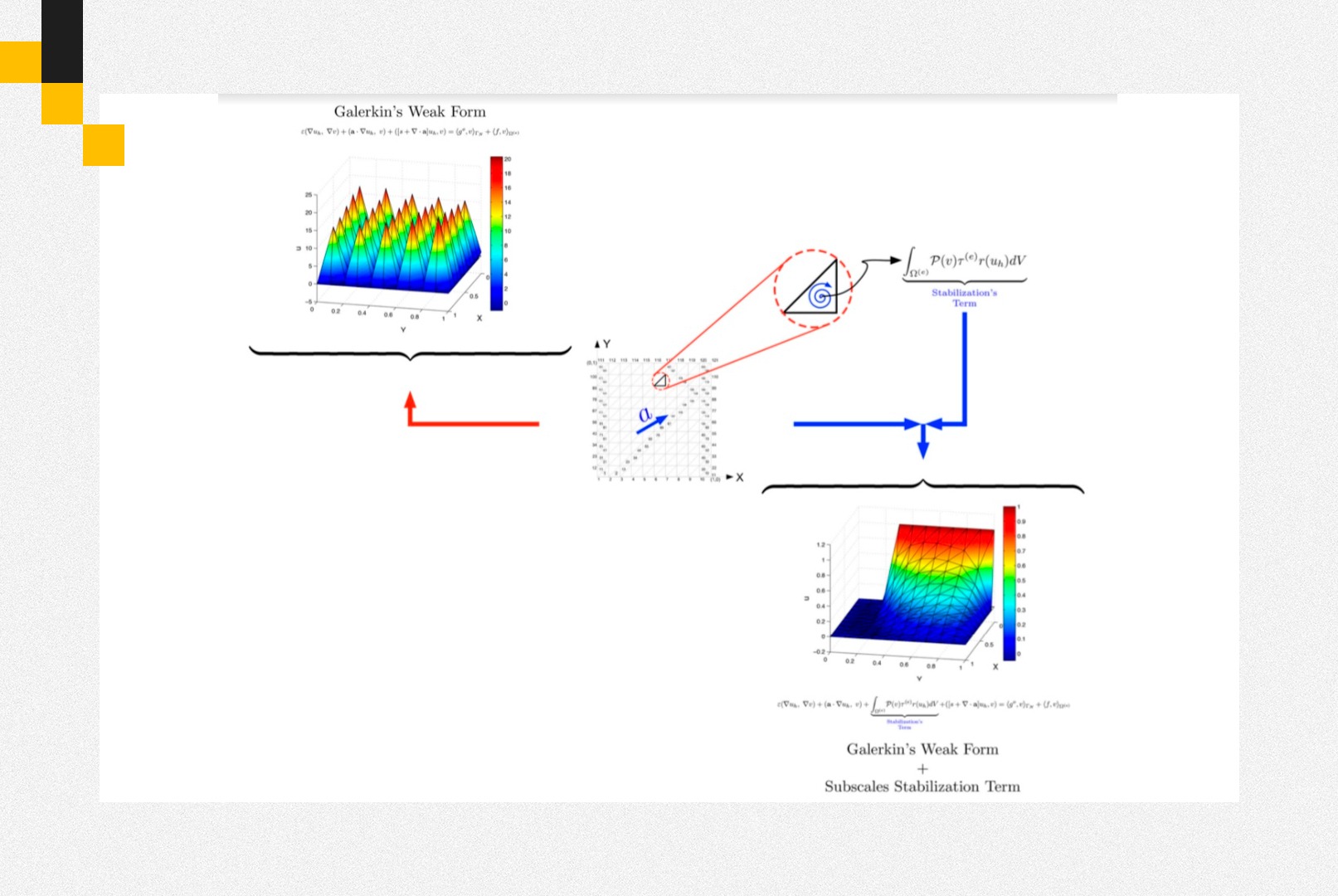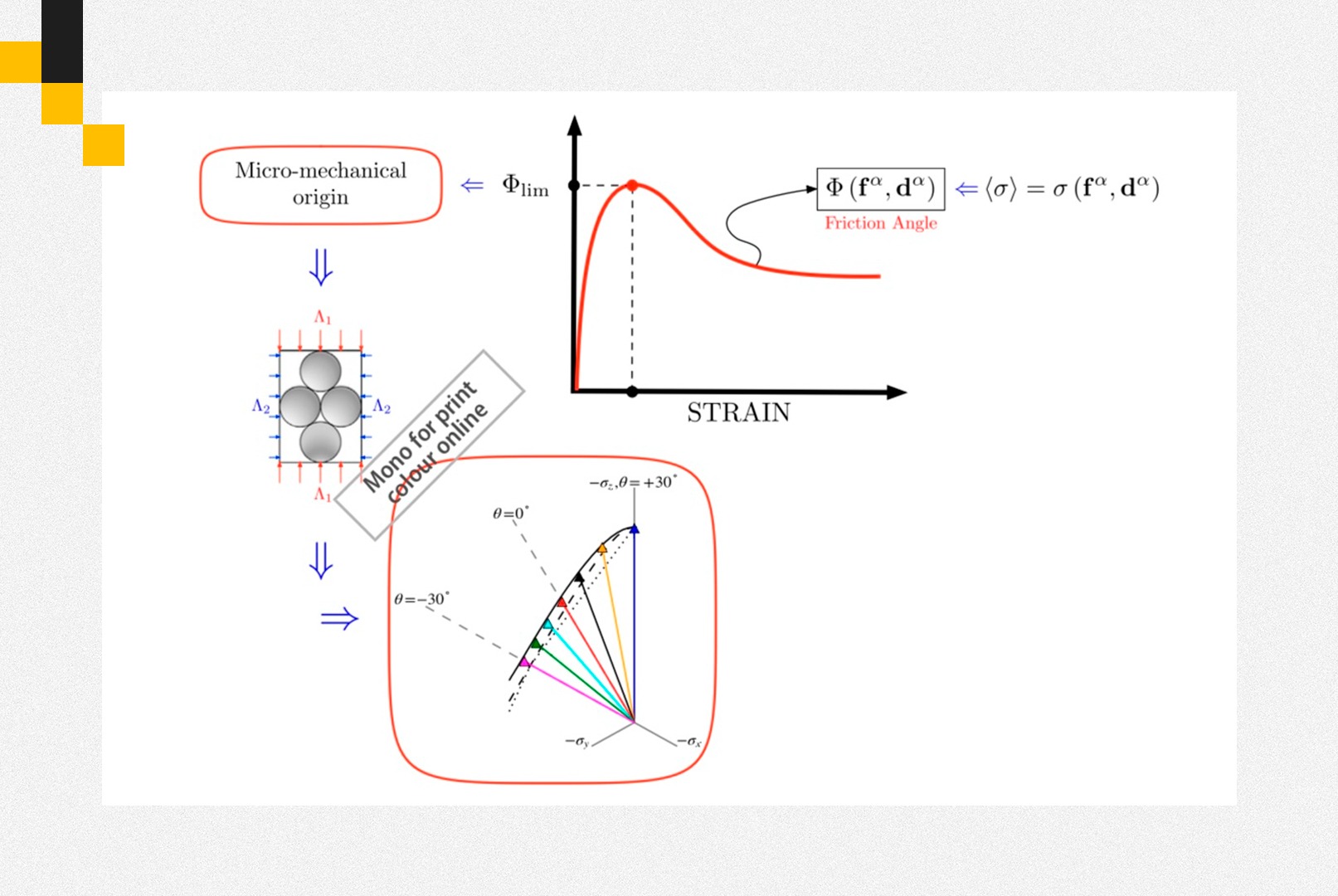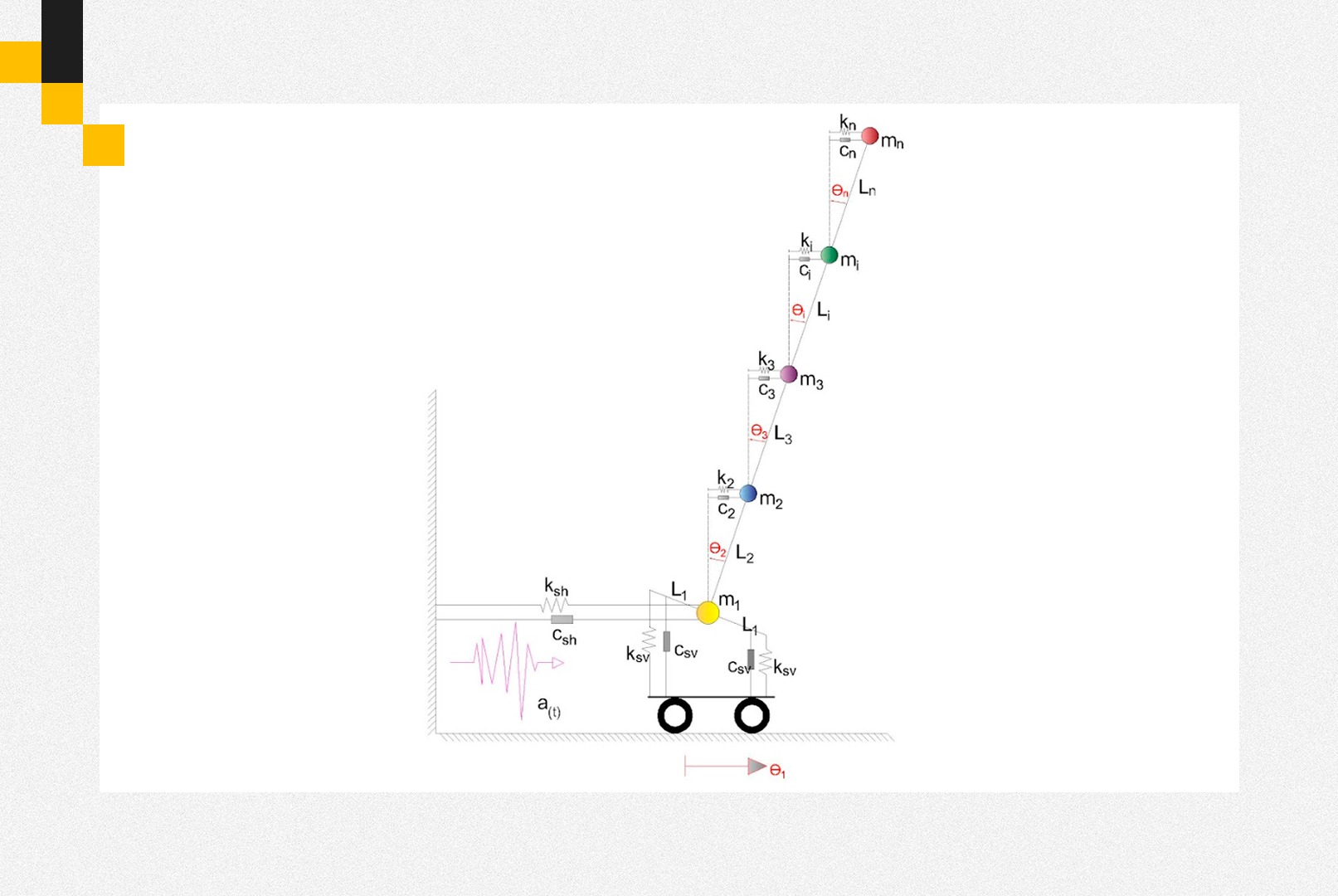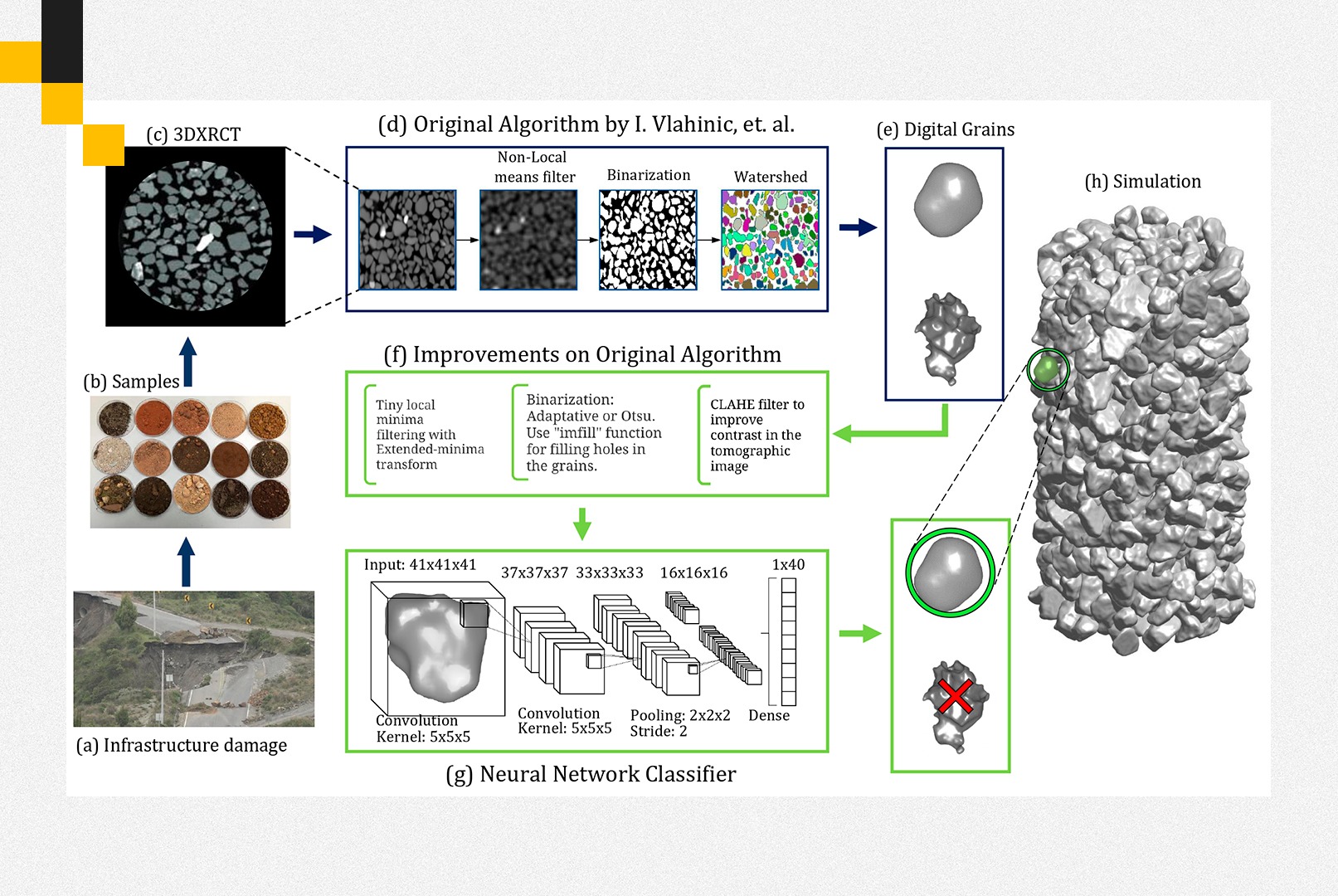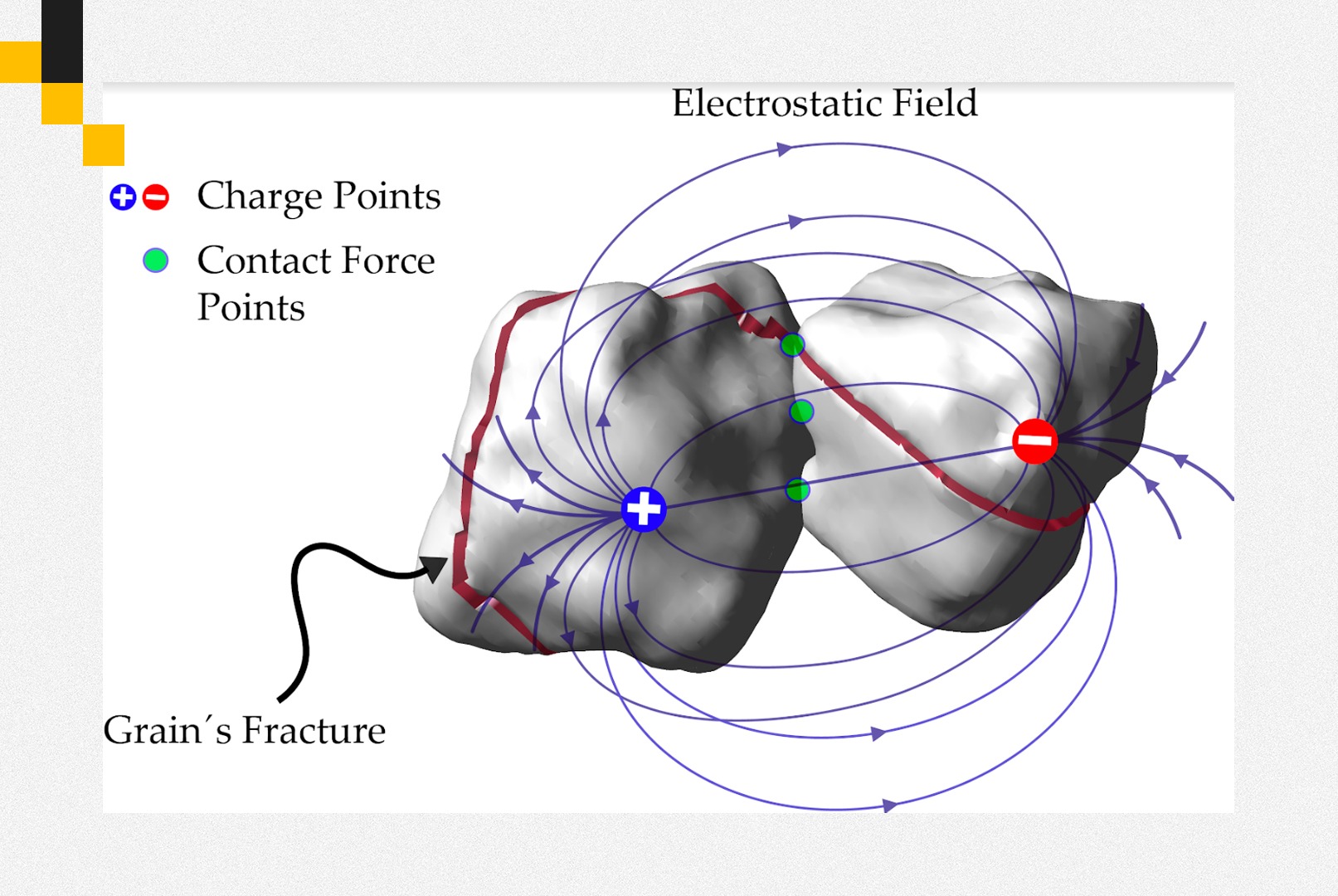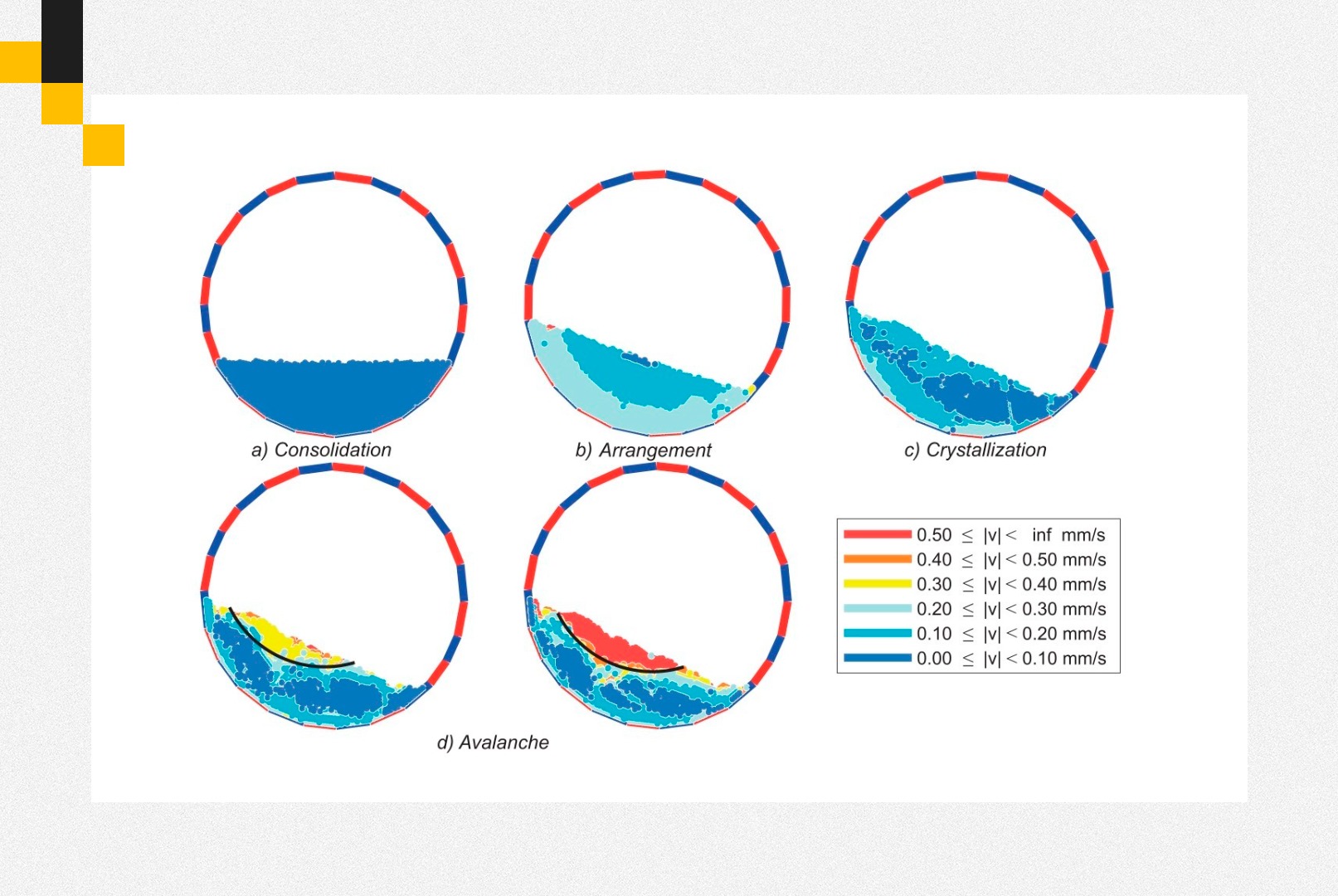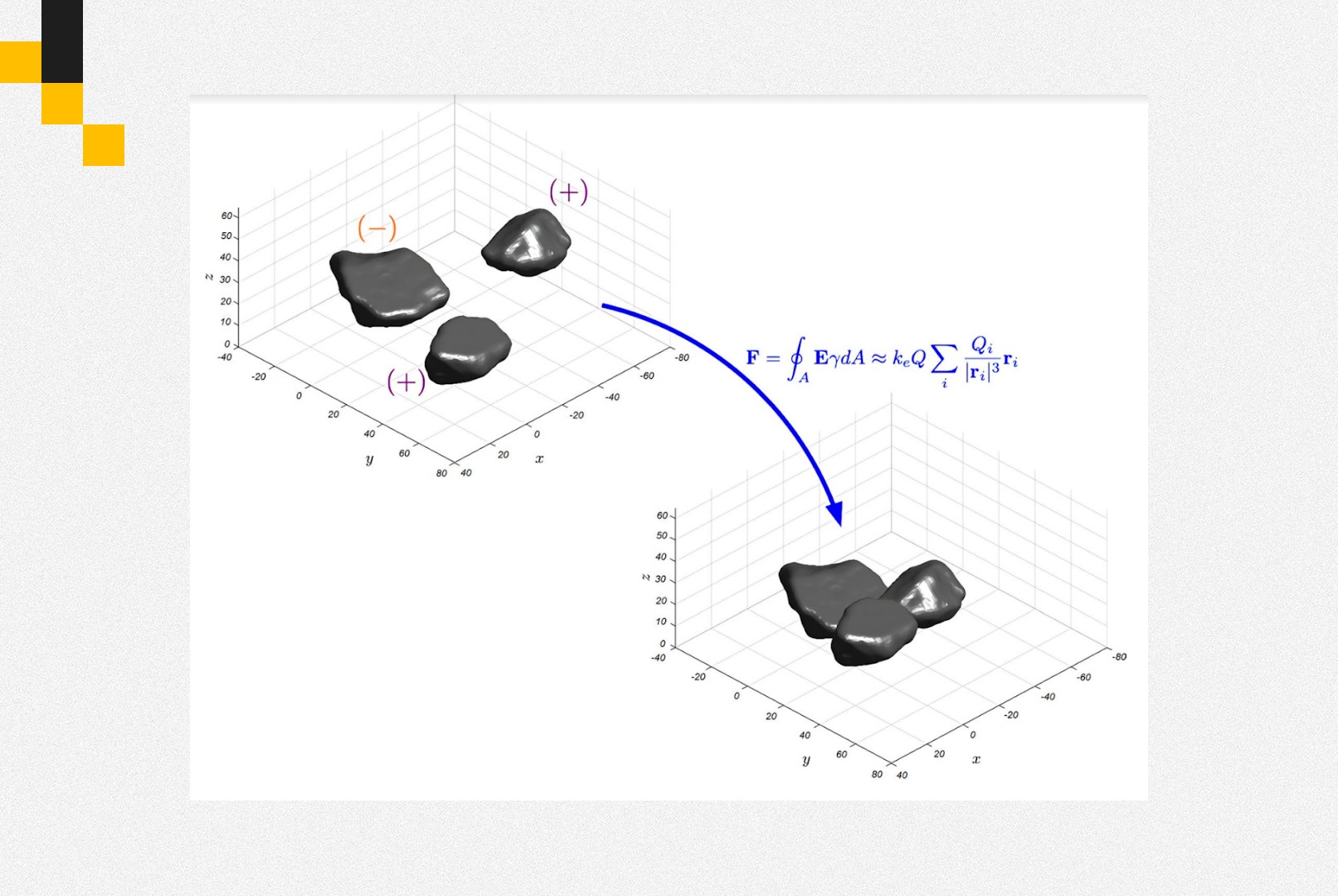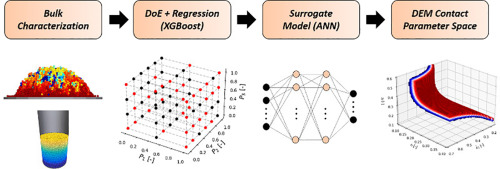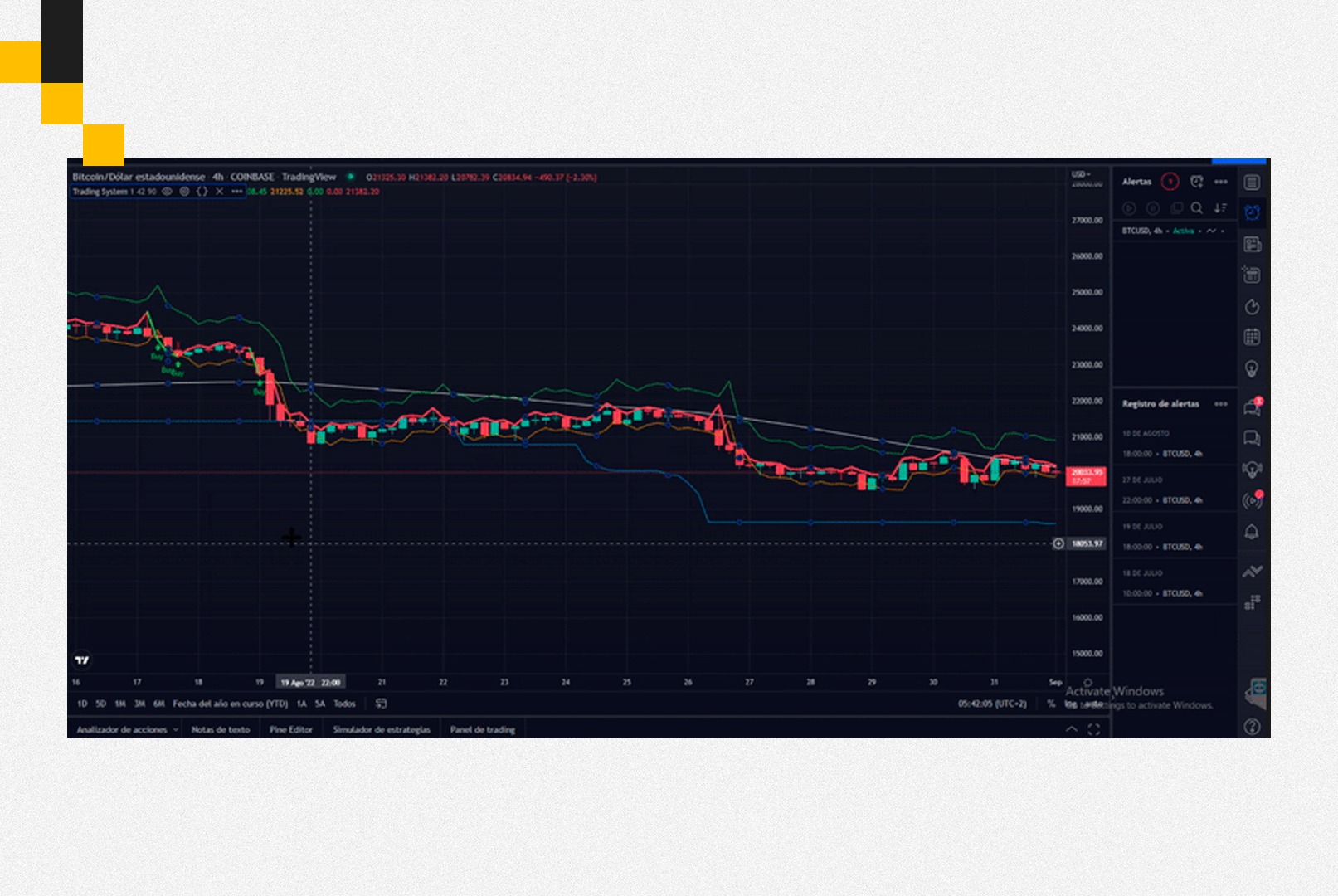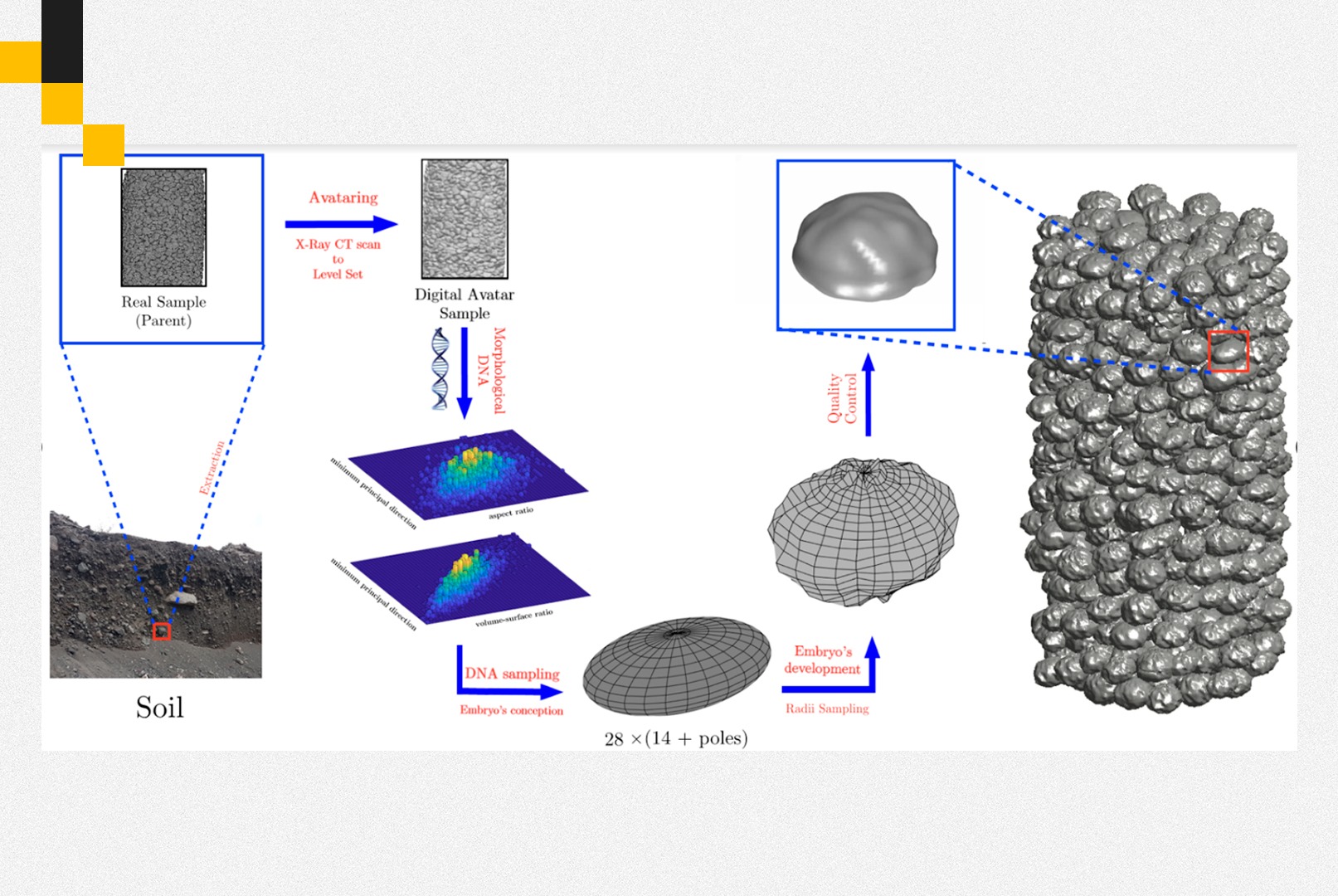
Project description
A geometry-based algorithm for cloning real grains 2.0
Introduction:
The understanding of the soils’ behavior is studied by geo-physics and civil engineering that allow us to build big skyscrapers and explore celestial bodies like our Moon and Mars aided by numerical simulations. The development of technologies to represent the soil samples, such as Level Sets (LS), allow for making faster calculations in Discrete Element Method (DEM) simulations with thousands of grains. In addition, the inclusion of arbitrary shapes in DEM simulations has been of key importance to accurately reproduce the physics involved in the bulk behavior of granular materials. In the last twenty years, 3D X-ray Computed Tomography scanning (3DXRCT) has made it possible to recover real shapes of granular materials such as Hostun sand with very high detail and include them in DEM simulations. However, costly equipment and specialized personnel are needed to perform these 3D X-ray CT scans. In this regard, the size of the scanned samples is small (a few thousand grains) compared to the amount and the size of the material required to reproduce macroscopic/engineering behavior.
Paper Link: https://link.springer.com/article/10.1007/s10035-018-0851-9
Description:
The computational algorithm that “clones”/generates an arbitrary number of new digital grains from a sample of real digitalized granular material. The improved algorithm produces “cloned” grains that more accurately approach the morphological features displayed by their parents.
Now, the “cloned” grains were also included in a discrete element method simulation of a triaxial test and showed similar mechanical behavior compared to the one displayed by the original (parent) sample. We compute multivariable probability density functions from the parents’ morphological parameters (morphological DNA), i.e., aspect ratio, roundness, volume- surface ratio, and particle diameter, based on the aforementioned multivariable distributions and that, in the same way, introduces an enhanced radii sampling process, as well as a new quality control test based on the volume-surface ratio is discussed.
Benefits:
The development of this algorithm will allow researchers to reduce environmental risks caused by landslides by performing simulations and creating evacuation plans for people at high-risk settlements and help in the design of vehicles for space exploration by testing these vehicles with cloned martian soil samples.
Execution time:
1 and a half year starting from 2017
Required equipment:
Clusters (Universidad Yachay y MODEMAT at Escuela Politécnica Nacional)
Probability of success:
100%
